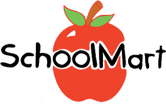Tips for Boosting STEM Hybrid Learning
STEM Learning, an academic discipline that incorporates science, technology, engineering, and math, has been growing in popularity amongst educators and institutions across the country. As the light at the end of the Coronavirus tunnel approaches, educators lean more towards hybrid learning as students begin to make their way back into the classroom. With students working part-time from home, the team at SchoolMart has outlined several strategies on how educators can incorporate engaging STEM programs into their hybrid classrooms.
Effectively Manage Expectations & Communicate Clearly
With students experiencing transitions from in-person, to entirely virtual, to now hybrid learning, it is extremely important that as an educator, you set up a clear set of guidelines and expectations for your students. These expectations can include class policies, etiquette, deadlines, and requirements. Clearly outlining these expectations will help to keep an open line of communication between educators and students as well as what students can expect from a hybrid classroom curriculum and environment.
Hands-On Experiences Can Lead to Creativity
With hybrid learning leaving some students at home while others are in the classroom, many could see hybrid learning as an obstacle for hands-on projects and activities. There are ways, however, for educators to still provide students with hands-on experiences, even with this new classroom experience. Certain video-conferencing platforms can help educators walk through the recreation of projects, with other tools allowing students to provide assistance in designing real-world experiments or even performing them themselves from home.
Flipped Classroom Models & Cohort Classes Can Build Support and Collaboration
The flipped classroom model has gained recent popularity since the beginning of the pandemic, since it involves students watching pre-recorded lecture videos asynchronously before class time, allowing educators more time to engage with their students in class and perform more experiments, demonstrations, or projects. Additionally, instituting a cohort system into the classroom can allow educators to group students with similar interests and skill sets into smaller groups. This will allow for further collaboration between students, more time for creative expression and ideation, as well as prepare them even more for their futures.
Learn More about STEM Hybrid Learning With the Help From Ed Tech Professionals at SchoolMart
STEM Learning can be a beneficial addition to any educator’s classroom, with many future career paths aligning with STEM program fundamentals. Virtual and hybrid learning can prove to be a true challenge for both educators and students alike, but creating an engaging STEM program that can keep students involved and learning from home can create an advantageous learning environment. To learn more about STEM and hybrid learning programs, contact a qualified ed-tech professional from SchoolMart today by clicking here.
